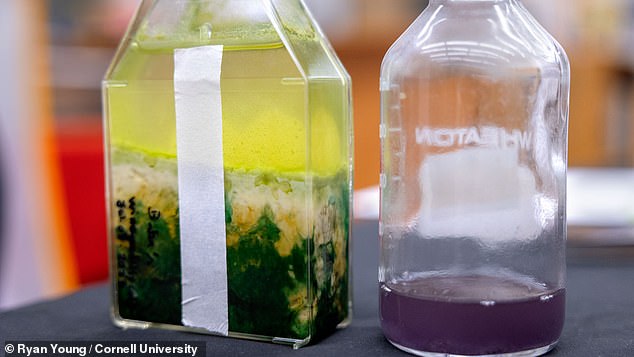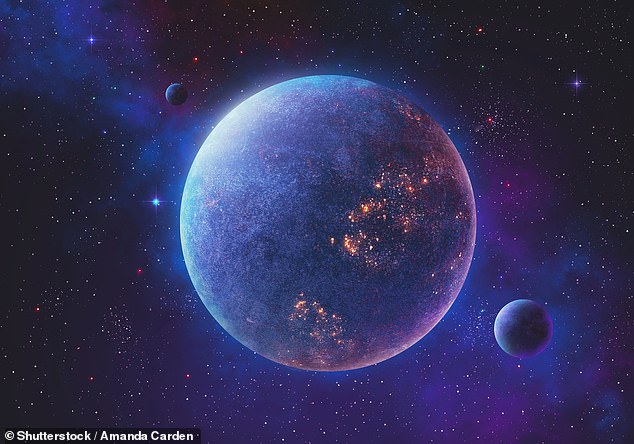- Scientists cataloged the colors of a variety of organisms and minerals.
- Analysis Suggests Purple Bacteria Could Be on Planets Orbiting Red Dwarf Stars
It is one of the biggest unanswered questions in science: does life exist beyond Earth? And if so, where is it hiding?
Now, scientists at Cornell University believe they have taken a big step forward in the search for extraterrestrials.
In a new study, they claim that planets hosting extraterrestrial life can emit a distinctive purple hue.
“We are simply opening our eyes to these fascinating worlds around us,” said Dr. Lisa Kaltenegger, co-author of the study.
“Purple bacteria can survive and thrive in such a variety of conditions that it is easy to imagine that, in many different worlds, purple could be the new green.”
Scientists at Cornell University believe they have taken a big step forward in the search for extraterrestrials. In a new study, they claim that planets hosting extraterrestrial life may emit a distinctive purple hue (artist’s impression)
Life on Earth is often associated with a familiar shade of green.
However, life on other planets could look very different.
In their new study, the team set out to understand what alien hunters should be looking for.
“We need to create a database of life signs to make sure our telescopes don’t lose life if it doesn’t look exactly like what we find around us every day,” Dr. Kaltenegger said.
Researchers cataloged the colors and chemical signatures of a wide range of organisms and minerals.
Their analysis revealed that purple bacteria can use invisible infrared radiation to drive photosynthesis.

Researchers cataloged the colors and chemical signatures of a wide range of organisms and minerals. Their analysis revealed that purple bacteria can use invisible infrared radiation to drive photosynthesis.
For this reason, purple bacteria probably prevailed on early Earth before the advent of plant-type photosynthesis, the researchers said.
“Here they already thrive in certain niches,” said Lígia Fonseca Coelho, first author of the study.
Beyond Earth, purple bacteria could be particularly suited to planets orbiting cooler red dwarf stars, the most common type in our galaxy.
“Imagine if you weren’t competing with green plants, algae and bacteria,” Dr. Coelho added.
“A red sun could offer them the most favorable conditions for photosynthesis.”
What’s more, researchers say these worlds would produce a distinctive “luminous signature” that we could detect using ground-based and space-based telescopes.

Beyond Earth, purple bacteria could be particularly suited to planets orbiting cooler red dwarf stars, the most common type in our galaxy.
“Whether purple bacteria thrive on the surface of a frozen Earth, an ocean world, a snowball Earth, or a modern Earth orbiting a colder star, we now have the tools to look for them,” Dr. Coelho said.
The new study comes shortly after scientists suggested that extraterrestrial life could be hiding much closer to home.
Scientists at the University of Washington say NASA could confirm extraterrestrial life in 2030 when it launches its $178 million spacecraft to Jupiter’s moon.
NASA will launch its Europa Clipper in October for its five-and-a-half-year journey to Europa, where it will spend four years researching the icy moon.
In a recent study, researchers analyzed the instruments aboard the spacecraft and discovered that they are capable of capturing a single living cell in a small grain of ice ejected from the moon’s oceans.

